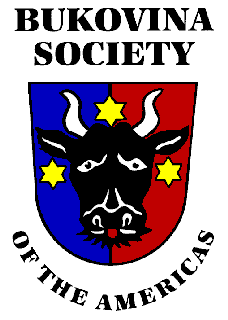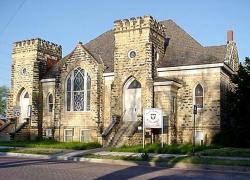THE GOLDEN BISTRITZ
THE SETTLEMENT OF GERMAN POPULATION GROUPS IN BUKOVINA (I)
Neuer Weg (Bucharest) Vol. 30, July
29,1978, p. 3.
translated by.
Dr. Sophie A. Welisch,
Posted on the World-Wide Web with
permission of the author
by the Bukovina Society of the Americas,
April 3, 2004.
Diese Seite auf Deutsch

Bukovina, the easternmost province of the former
Austro-Hungarian Monarchy, was annexed by Austria on May 7, 1775 as
“compensation“ for its negotiations at the peace conference following the
Russo-Turkish War.
That same year, 1775, the Austrian authorities began to
formulate an „immigration plan“ for this territory, inhabited from earliest
times by Romanians and in isolated regions by Ukrainians (Little Russians,
Huzules, Ruthenians). Within a century people of many nationalities from all
parts of the Monarchy settled in the principal towns of Cernăuţi (Czernowitz),
Vijniţa (Wisnitz), Siret (Sereth), Radăuţi (Radautz) and Suceava (Sutschawa),
adding to the Romanian autochthonous population of north and south Bukovina.
Aside from German-speaking officials, miners, craftsmen and farmers from
Transylvania, Galicia, Bohemia, etc, there were immigrants from the Rhine-Main
area and Baden-Württemberg in Germany, as well as Lippovanians, Poles,
Armenians, Czechs, Slovaks, Serbo-Croatians, Italians, Tatars,
Bulgarians and Gypsies.
Centuries earlier Germans from Transylvania, including
craftsmen, merchants, doctors, pharmacists and others, had already migrated to
Moldavia where they had taken up residence in Baia, (Moldenmarkt), Sasca (Klein-Saska),
Cotnari (Kotnersberg), Tîrgu Neamt (Neamtz), Roman (Rommesmarkt), Iaşi (Jassy),
Huşi (Husch), Saşa (Sassa), Bacău (Backau), Trotuş (Trotesch), Bîrlad (Berlad);
others went to south Bukovina, settling in Suceava (Sutschawa), Sasovîi Rog (Sächsisch-Horn),
Sasca (Saskaberg), Siret (Sereth), etc. Some settlements were unsuccessful as,
for example, the south Bukovina village of Zabeşseic (Philippen), founded in
1760 but abandoned at the beginning of the Austrian era with the old German
homes sold in 1790. The same fate befell the village of Sadagora (Gartenberg),
founded in 1771 by German cloth manufacturers from Silesia but disbanded about
fifteen years later.
The Bukovina Germans, therefore, immigrated to Bukovina only
after the occupation of the province by Austria. Initially, under Empress Maria
Theresa, there came primarily civilian and military personnel in an official
capacity, who, in most cases, remained in the province. Soon thereafter
craftsmen and merchants were called to the region and were guaranteed
considerable incentives, as for example, exemption from tax and military
service. After these German-speaking professional groups, who were for the most
part settled in the cities, the Austrian military administration suggested to
the central bureaus in Vienna that German workers and farmers also be brought to
the province. These German immigrants came to Bukovina in stages: Zipser
„Saxons“ from what was then called Zips and from the Gründler Land (Slovakia),
so-called Swabians from Baden-Württemberg and the Rhine-Main region, and
German-Bohemians from the Bohemian Forest.
Between 1780 and 1781 veins of manganese, copper and iron ore
were discovered in the southern region of the province, ownership of which soon
passed to Karl Manz, Knight of Mariensee; this triggered the recruitment of
German miners in several Zipser communities.
In 1783 masons and carpenters from Transylvanian regiments
started construction of a foundry in Iacobeni (Jakobeny); after completion of
the project in 1784, the first Zipser miners were brought in, giving rise to the
communities of Fundu Fieru (Eisenthal) on the Eisenbach, a tributary of the
Golden Bistritz. With the aid of the Zipsers, the Manz iron works, the first
installation of its type in south Bukovina, was made operational. These first
Zipser settlers probably came to Bukovina from the region between Gelniće (Gollnitz),
Smelniće (Schmöllnitz), Opáka (Altwasser), Stoi ((Stoss) and Iaco (Untermetzenseifen).
In 1782 the first two pioneer families arrived in Czernowitz
from the Banat; they were accommodated in Roş (Rosch near Czernowitz). The same
year an additional twelve families, likewise from the Banat, appeared in
Czernowitz and were settled in half-collapsed wooden homes in Molodia (Jungheim),
Ciucica (Zutschka), Mitoca (Lippowen) and in the villages of the Putna
monasteries, Barnovschi (Barnowsky) and Dragomirna.
In 1783 the Austrian Mining Commission and the Salt Assay
Office in Solca (Solka) had already established installations for the mining of
salt in the foothills of Solka –as well as on Plesch Mountain northwest of
Jakobeny; in the 9th decade of the last century they extended their operations
southward to Cacica (Katschika), where German-Bohemian workers had already been
settled between 1790 and 1795. The names of the first Zipser and Austrian
craftsmen and officials who opened the salt mines in Solka are known to us
through extant documents: Johann Wamser (master machinist and cabinetmaker),
Leopold Eissert (“Controller”), Melchior Theiss (overseer), Golz and Krone (both
official security guards), Josef Fleckhammer, Dominik Aystetten, Johann Boberitz,
Barthel Brettner, Georg Sturm, Franz Steiger (all installation overseers) and
Johann Wannsiedel (miner).
In 1786 a new wave of immigrants arrived in Jakobeny and
Eisenthal, which included twenty-five men and five women from various
communities in the Gründler Land (Zips). A year later, in 1787, there followed
eighty families from the Rhineland, from Franconia and Baden-Württemberg and
probably again from the Zips, who were settled in extant Romanian communities.
Thus there arose the villages of Frătăuţii Vechi (Deutsch-Altfratautz),
Frătăuţii Noi (Neufratautz), Satulmare (Deutsch-Satulmare), Milişeuţi (Deutsch-Millischoutz),
Milişeuţii de Sus (Ober-Millischoutz), Bădauti (Deutsch-Badeutz), Mănăstioara (Sankt
Onufry), Arbore (Deutsch-Arbora), Itcani-Gară (Neu-Itzkany), Ilişeşti (Deutsch-Illischescht),
Terebleşti (Deusch-Terebleschti), Vascăuti (Waschkautz) besides Baineţ (Bainze),
Falchen (Falken), Dorneşti (Kriegsdorf-Hadikfalva-Hadik) and Ţibeni (Helfgott-Istensegics),
where Hungarian farmers had also previously settled, as well as Floceni (Ostrau),
Horodnicu de Jos (Unterhorodnik), Horodnicu de Sus (Oberhorodnik), Vicovu de Jos
(Unterwikow), Vicovu de Sus (Oberwikow) and the villages of Jungheim, Rosch,
Seletin and Sereth, where aside from Romanians, there also lived
Ukrainian-speaking Huzules .
In the period from 1782 –1787 farmers and craftsmen from
Franconia and Swabia, and a few from Austria and from the communities of
Cimpulung Moldovenesc (Kimpolung) and Sutschawa, were settled in Bălănceana (Balatschana
), Bosance (Bossantsche), Braşcea (Braschka), Bucşoi (Bukschoja), Dorna-Candreni,
Dorna-Vatra, Gemine (Dschemine), Cliţ (Glitt), Gurahumora, Capucodru, Cîmpulung-Sat
(Deutsch-Altkimpolung), Corlata (Korlaten), Masanaieşti, Putna, Valea Putnei (Putnathal),
Stulpicani (Stulpikany) and Stupca (Stupka); in the last decade of the last
century German farmers also took up residence in the northern Bukovina towns of
Stăneştii de Jos (Unterstanescht), Zadowa, Cotman (Kotzmann), Vijniţa (Wisnitz)
and Hliboaca (Hliboka).
Today one can with difficulty ascertain from which regions
the Swabians or Franconians immigrated, since a number of them entered Bukovina
via Banat; thus it must be concluded that the great population group, which
would later be termed “Swabian,” consisted of immigrants whose forebears came
from Baden-Württemberg or also from other parts of Germany and the [Habsburg]
Monarchy.
Some of these Swabian families were part of the great
“Swabian migration” which followed the downward course of the Danube through the
Banat of that time; but there they found no free land. And when they heard that
they could still settle in Bukovina, they traveled on. A similar situation
developed with a number of the German immigrants who had been settled by Emperor
Joseph II in Galicia, where they received too little land; they also continued
on to Bukovina. There they got twelve hectares of farmland, a wooden house, farm
equipments, seeds and cattle. In a short time they were able to become
economically well-established in their new communities.
In the second half of the 18th century there were also some
settlements founded on the initiative of various noblemen and landowners, as for
example in northern Bukovina, in the vicinity of Vijniţa (Wisnitz) –
Alecsandreni (Alexanderdorf), Catranieni (Katharinendorf), Nicolai (Nikolausdorf)
and Dealul iederii (Eichenau) on the Little Sereth. The settlers, for the most
part German-Bohemians, had to commit themselves to clearing the extensive
forests and to cultivating the fields and meadows.
Top of Page
Return to: Bukovina Families and Villages
 Visitors
since April 3, 2004
Last Revised:
04/07/08 04:40:12 PM Visitors
since April 3, 2004
Last Revised:
04/07/08 04:40:12 PM
|

